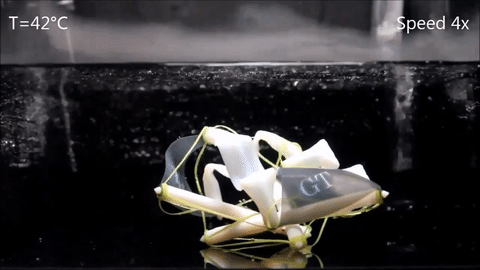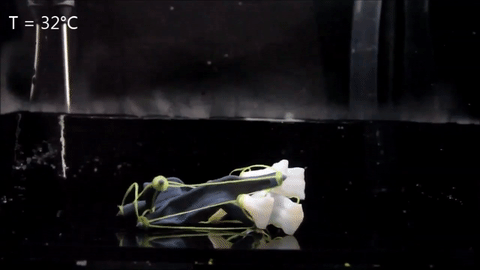[ad_1]

It takes a lot of money to launch stuff into space — even by NASA terms. The cost ranges from around $9,000 to more than $40,000 per pound. With that sort of price tag, weight and space are at a major premium with shuttle missions, causing NASA to look for innovative new ways to create more compact payloads. A team at Georgia Institute of Technology is exploring a method that uses 3D printers to create small structures that expand when expose to heat that might some day help with the problem.
The method is a form of what the scientific community calls 4D printing, in which a 3D printed structure changes shape after a print. The fourth dimension here being time. It’s something of an industry buzzword of late, but it applies pretty well here. Like similar research by teams at schools like MIT, the Georgia Tech team’s work relies on temperature changes to start the transformation. Where the research differentiates itself from most is its use of tensegrity, a system in which floating solid roads are held together by cables. The systems are light, strong and easily collapsed, making them ideal for space travel.
The team’s structures are created entirely on a series of 3D printers. In their post-printed stage, the objects lie flat. When dunked in 149-degree water, they start to unfold. The speed at which that occurs is baked directly into the print by the researchers, using trial and error. If you have a large structure that deploys too fast, you’re going to be left with a big old mess of wires and rods.
Professor Glaucio Paulino refers to the programming as “memory,” something built into the polymers that are held together by the cables. “The memory is embedded in the struts. There is no memory in the cables,” he tells TechCrunch. “They are a flexible material. All of the memory is printed only on the struts. When we printed, we came up with a technique that allowed us to print this memory.”

Memory here also implies that the structures will be able to return to their former state time and again, though Paulino says that the materials are holding them back from doing so at this point. They start to wear down with multiple transitions, though the team is working on a fix for that.
It’s also working on scaling these systems up, according to Paulino. As it stands, tthey’re still a ways off from building things big enough to house a human. Though tensegrity itself has been used on a pretty large scale. The term, which was coined by architect Buckminster Fuller in the 1960s, has been applied to a range of large structures including stadiums and bridges. While not super common in the architectural world, it’s highly regarded for its strength in spite of a minimal number of materials.

If all goes well, the technology could eventually be used on a wide range of devices from space structures and robotics to biomedical needs.
Source link
 Tech News code
Tech News code


